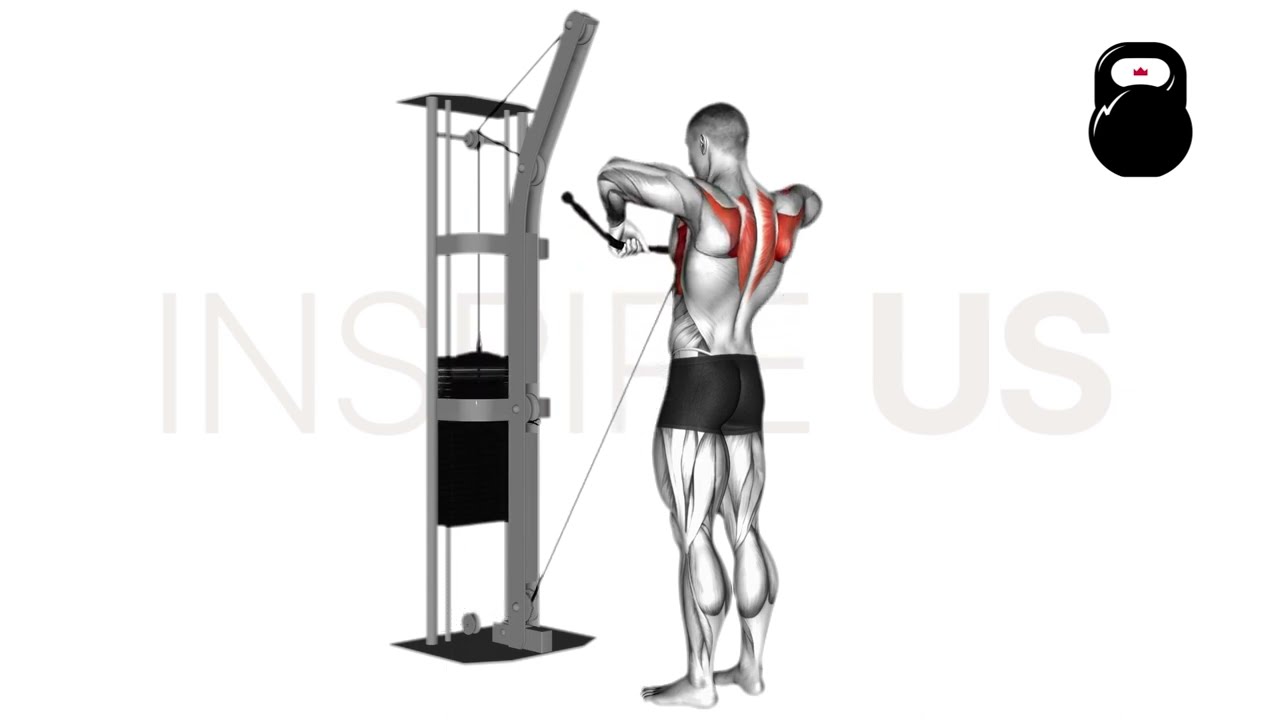Cable Upright Rows: Benefits, Muscles Worked, and More
The cable upright row is a highly versatile machine-based upper back exercise best programmed as a secondary compound movement in a shoulder or back workout.
In actual practice, cable upright rows are used to build vertical pulling strength and muscle mass in the deltoids, trapezius and the biceps.
What are Cable Upright Rows?
Upright cable rows are a machine-based compound exercise classified as a vertical pull.
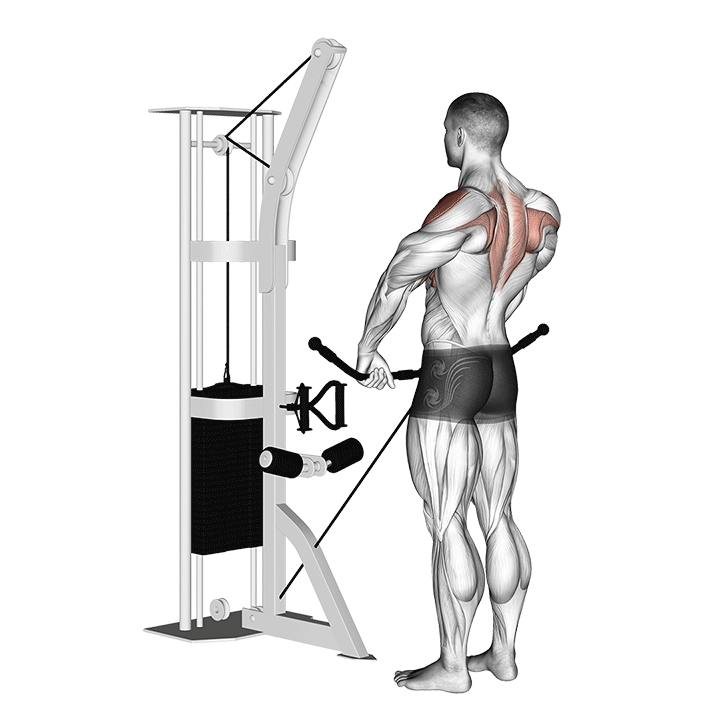
Most often, cable upright rows are programmed into bodybuilding or strength programs so as to reinforce the upper/posterior section of the back and deltoids.
Although intended to be of only moderate intensity, the exercise has nonetheless earned a poor reputation due to its supposedly greater risk of shoulder injury. So long as a reasonable amount of weight is lifted and proper form is followed, this risk can be largely minimized.
However, due to this increased injury risk, lifters should nonetheless still avoid programming the upright cable row as their primarily pulling movement. Exercises like pull-ups or rows are far safer and arguably more effective from a primary source of stimulus standpoint.
Are Cable Upright Rows the Right Movement for You?
Cable upright rows require well-established shoulder mobility and familiarity with proper biomechanics.
As such, they are best reserved for lifters of at least an intermediate level, if not those with even greater experience.
Individuals with a history of biceps, scapula, shoulder joint or elbow issues should first speak to a medical professional prior to attempting cable upright rows.
How to do Cable Upright Rows
To perform a repetition of the cable upright row, the lifter will begin by first setting a cable pulley to the lowest elevation possible - attaching a straight bar or similar two-handed attachment as they hold it in a double overhand grip.
The hands should be placed wider than shoulder-width apart along the handle, the chest pushed outwards and internal rotation of the shoulders minimized as much as possible.
Standing close to the pulley and ensuring the torso is positioned upright, the lifter then begins to pull the handle towards their neck, flaring the elbows out to the sides and squeezing their deltoids as they do so.
As the handle is drawn upwards and the elbows are raised above the shoulders, the lifter retracts their scapula and squeezes their upper back muscles, reaching the apex of the movement.
From this point, the lifter then slowly reverses the motion and allows the resistance of the cable to pull their arms back downwards - straightening as the handle passes beneath the abdomen.
When the arms are at the front of the torso once more, the repetition is considered to be complete.
Sets and Reps Recommendation:
With a moderate load and moderate capacity for volume, cable upright rows are most effective when performed for 3-4 sets of 8-12 repetitions.
What Muscles Do Cable Upright Rows Work?
Cable upright rows are a compound movement, meaning that they target multiple muscle groups throughout their movement pattern.
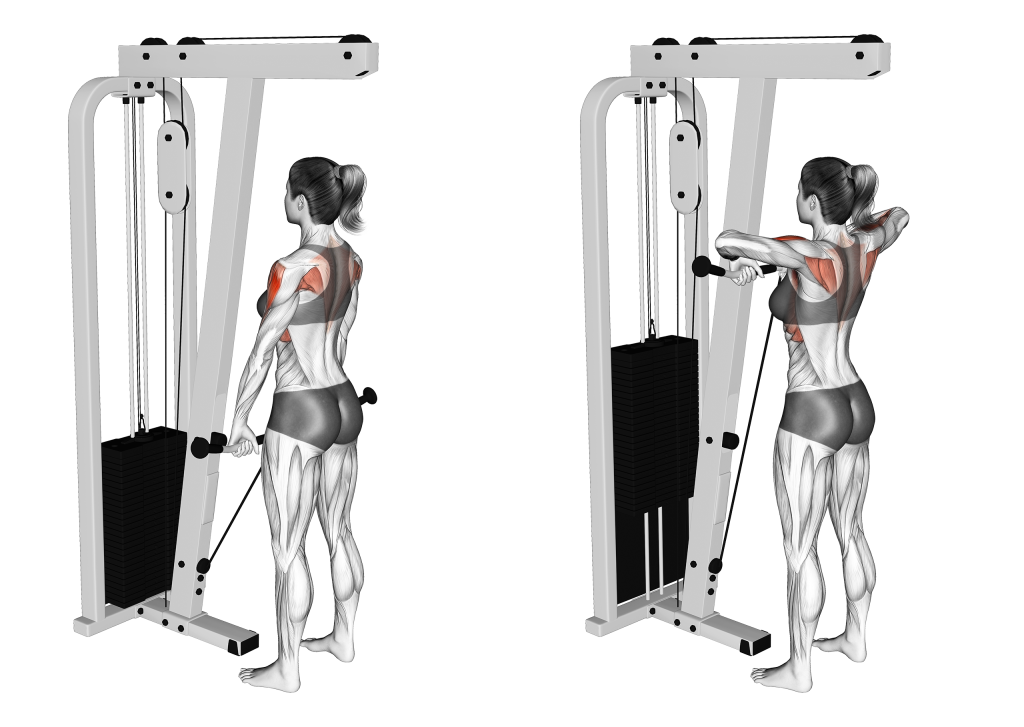
Of course, these muscles are not all worked to the same degree - and to help visualize what sort of muscles are worked most effectively by the upright cable row, we need to separate them in terms of muscular contraction exhibited.
Muscles exhibiting dynamic contraction are referred to as “mover” or “mobilizer” muscles, where they receive the greatest benefit from performing said exercise. In comparison, muscles that contract isometrically are simply called “stabilizers”.
Mover/Mobilizer Muscles
During a repetition of the upright cable row, the medial deltoids, trapezius, brachialis and inner biceps brachii head are all worked in a dynamic capacity.
In particular are the medial head of the deltoids and the upper trapezius - of which will be worked the hardest due to the vertical pulling movement and scapular elevation involved.
Because of this emphasis, the cable upright row is frequently used to develop these often forgotten muscle groups, aiding in rounding out the upper body’s silhouette and strengthening the shoulder structure as a whole.
Stabilizer Muscles
Apart from the mobilizer muscles, upright cable rows will also isometrically contract the anterior head of the deltoids, the outer head of the biceps brachii and the posterior head of the deltoids as well.
Unlike the mover muscles, these stabilizers contract in a static manner, meaning that little development outside of isometric strength will be derived from the exercise.
What are the Benefits of Doing Cable Upright Rows?
Despite their reputation for causing shoulder impingement issues, cable upright rows are nonetheless still useful for achieving a number of benefits relating to the deltoids and traps.
Builds Strength and Mass in the Trapezius and Deltoids
Regardless of whether a proponent or detractor to upright rows, both sides agree that the exercise is quite effective at developing the deltoids and trapezius to a highly intense degree.
Because cable upright rows benefit from a large range of motion, lengthy time under tension and relatively isolated focus, they are the perfect tool for developing these muscles in the pursuit of hypertrophy.
The medial deltoids and upper trapezius muscles contribute greatly to the appearance of a wide upper torso, producing the much coveted “V-taper” sought by bodybuilders and fitness models.
In order to ensure that this hypertrophy is induced to the fullest extent, aim to keep the resistance at only a moderate level, and to instead focus on time under tension, a full ROM and completing a sufficient amount of volume with each set.
Unique Movement Pattern and Angle of Resistance
In comparison to most other exercises, the upright row and its cable variant are unique due to their movement pattern and angle of resistance.
The majority of vertical pulling movements tend to feature a significantly different pattern, with more common examples like the pull-up or lat pulldown instead featuring a starting overhead position and more advantageous usage of elbow flexion.
This difference in movement pattern is considered a benefit as it allows lifters to train their pulling strength in a direction that may otherwise be poorly developed due to overreliance on other forms of pulling exercise.
Further supporting this benefit is the cable machine’s capacity to allow for unique angles of resistance.
By adjusting the position of the pulley (and the lifters own distance to it), a more advantageous angle of resistance can be achieved.
Unlike with a free weight upright row, this adjustability of the cable machine can create a somewhat more angled pull, reducing strain on the shoulders or allowing for greater engagement of the trapezius simply by raising or lowering the pulley respectively.
Carryover to Other Vertical Pulls
Although relatively uncommon, movements like the barbell snatch, snatch grip deadlift or muscle up all feature similar mechanics and movement patterns to the upright row.
While not necessarily the same in terms of intensity, muscular recruitment or classification, regularly performing upright rows can help improve the lifter’s performance of these tangentially related exercises.
A good example of this is lifters who have difficulty building sufficient power as they transition from the deadlift position to the cross-torso swing during a power snatch. Without sufficiently strong and mobile trapezius and deltoid muscles, this movement becomes far more precarious and difficult to control.
Lengthy Time Under Tension
As a benefit of most other machine-based exercises, the cable upright row offers a consistent and constant level of tension throughout the movement pattern.
Unlike with exercises involving free weights or resistance bands, this constant tension better challenges muscles in direct opposition to the angle of resistance, aiding in muscular development and helping to reduce the risk of acute injury.
In order to better capitalize on this benefit, lifters should stand far enough away from the cable pulley to keep the cable itself taut, even at the start and end of each repetition.
Common Cable Upright Row Mistakes to Avoid
With upright rows, proper technique must be prioritized above all.
Apart from lifting a reasonable amount of weight, ensure you are not making the following mistakes, as they can easily lead to shoulder impingement and other forms of injury.
Rapid Tempo
As much as possible, each repetition of the upright cable row must be performed in a slow and controlled manner.
Performing the exercise with an excessively rapid tempo tends to involve greater momentum being generated, potentially leading to a breakdown in form and forcing the shoulder joint to needlessly absorb even more impact than normal.
The exercise should be performed in a manner slow enough that the lifters torso does not rock at any point during the movement, each half of the repetition (concentric and eccentric) stretching out as long as two seconds each.
Incorrect Machine Adjustment or Handle Attachment
The cable upright row is particularly dangerous when poor equipment adjustment or selection is present.
Due to the greater risk of injury inherent to the movement, selecting a handle that forces a too narrow or incorrectly oriented grip can lead to greater strain on the shoulders. Likewise, setting the cable handle too high may turn the movement into a face pull, rather than a row.
Keep the pulley relatively close to the floor and select a handle that allows for a wider than shoulder-width overhand grip. Some lifters may find that using an EZ-bar or rope attachment is significantly easier on their elbows and shoulders than a straight bar.
Allowing the Upper Arm to Raise Above Parallel With the Shoulders
Although the elbows should indeed be raised over the shoulders to maximize the “shrug” movement involved, avoid raising the upper arms over the shoulders as well.
This is a highly disadvantageous position for the shoulder joint, potentially leading to irritation and injuries if also internally rotating as well.
A good cue to avoid this particular form mistake is to lead the upward pull with the elbows - so long as the trapezius matches this movement in concert so as to avoid elbow strain as well.
Failing to Squeeze the Trapezius
To maximize range of motion and force output, lifters should ensure that they fully engage their upper trapezius muscles.
To do so, a shrugging motion should be done alongside the usual elbow flaring and external shoulder rotation - particularly during the upper half of the repetition where the bar nears the chin.
Failing to engage the trapezius correctly may cause poor performance or otherwise increase strain on the deltoid muscles as they are forced to bear more of the load.
Poor Range of Motion
To maximize muscular development as a result of the cable upright row, ensure that a full range of motion is completed with each repetition.
A full ROM equates to beginning and ending each repetition with the arms fully extended downwards, whereas the peak of the movement involves the handle nearly touching the neck with the elbows high over the shoulders.
An incomplete range of motion can lead to the development of muscular imbalances, sticking points and overall poor development as a whole.
Jutting the Head Forwards
Lifters may unconsciously extend their neck and head forwards at the height of the repetition, leading to greater strain on the cervical section of the spine and overall poor form.
Although less dangerous than other mistakes listed in this article, avoid jutting the head forwards or moving it in any way as the repetition is performed. Keep the neck and head aligned over the torso in a neutral and stable position.
Arching the Back/Rounding the Shoulders
Arching the back or rounding the shoulders forward during an upright row can place the shoulder joint in a disadvantageous position and engage the latissimus dorsi - both of which one should avoid.
To prevent this mistake from occurring, the lifter should push their chest out and aim to keep the scapula either neutral or elevated during the repetition, with the latter occurring during the higher point of the rep.
Cable Upright Row Alternatives to Try
If cable upright rows are irritating your shoulder - or if you simply want an exercise of similar benefit - try the following alternatives out.
Face Pulls
Face pulls are essentially the safer and more effective cousin of the upright cable row, featuring a similar muscular recruitment pattern but without the same joint impact or inherent limitations.
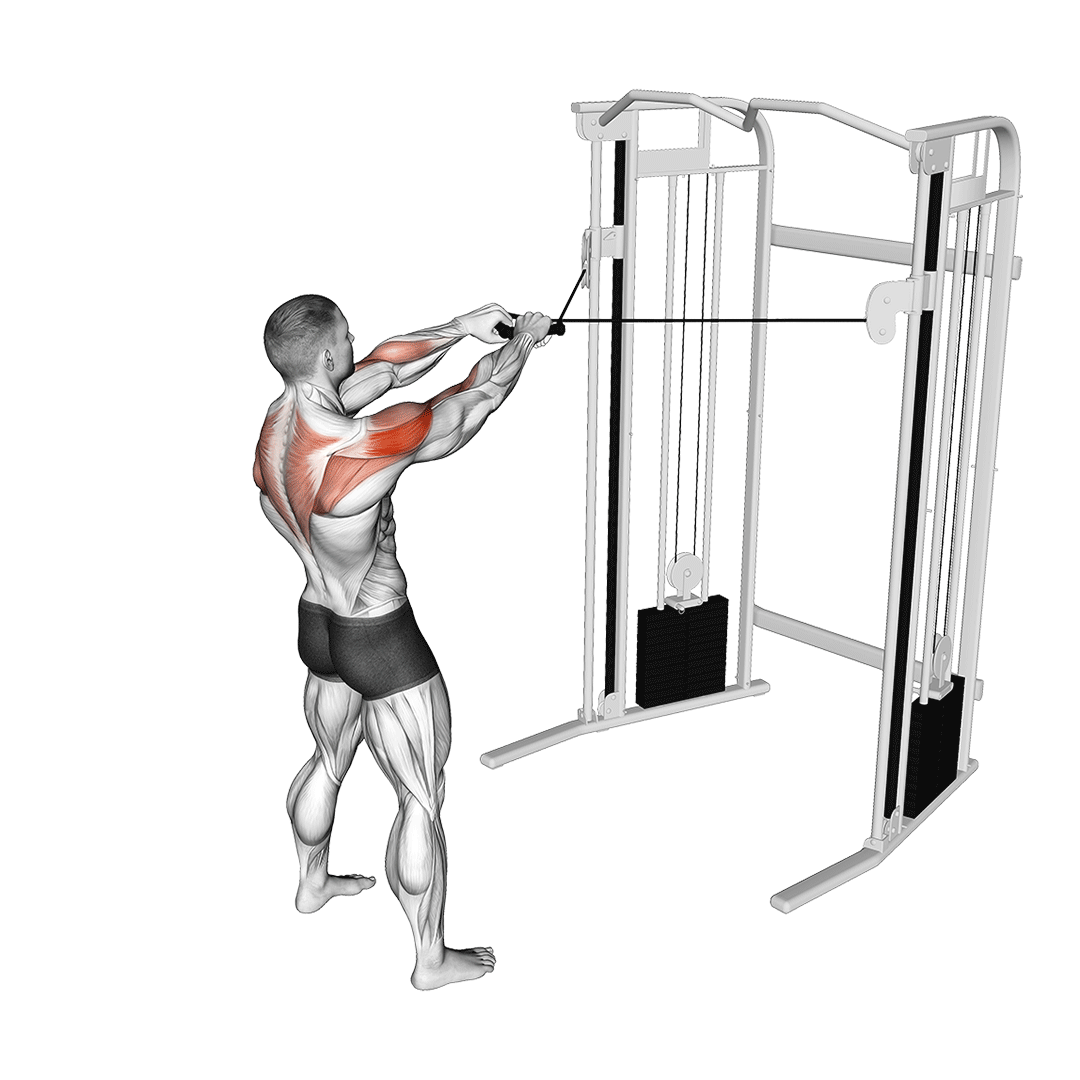
Much like upright cable rows, face pulls are also primarily performed with the use of a cable machine, but will instead feature the pulley being at head level and a far more horizontal angle of resistance.
Use face pulls as a cable upright row substitute in situations where your shoulder is susceptible to injury or if you wish for greater emphasis on the rear delts.
Close Grip Lat Pulldowns
Close grip lat pulldowns are a similarly machine-based back exercise that places greater emphasis on the trapezius and elbow flexors than its traditional counterpart.
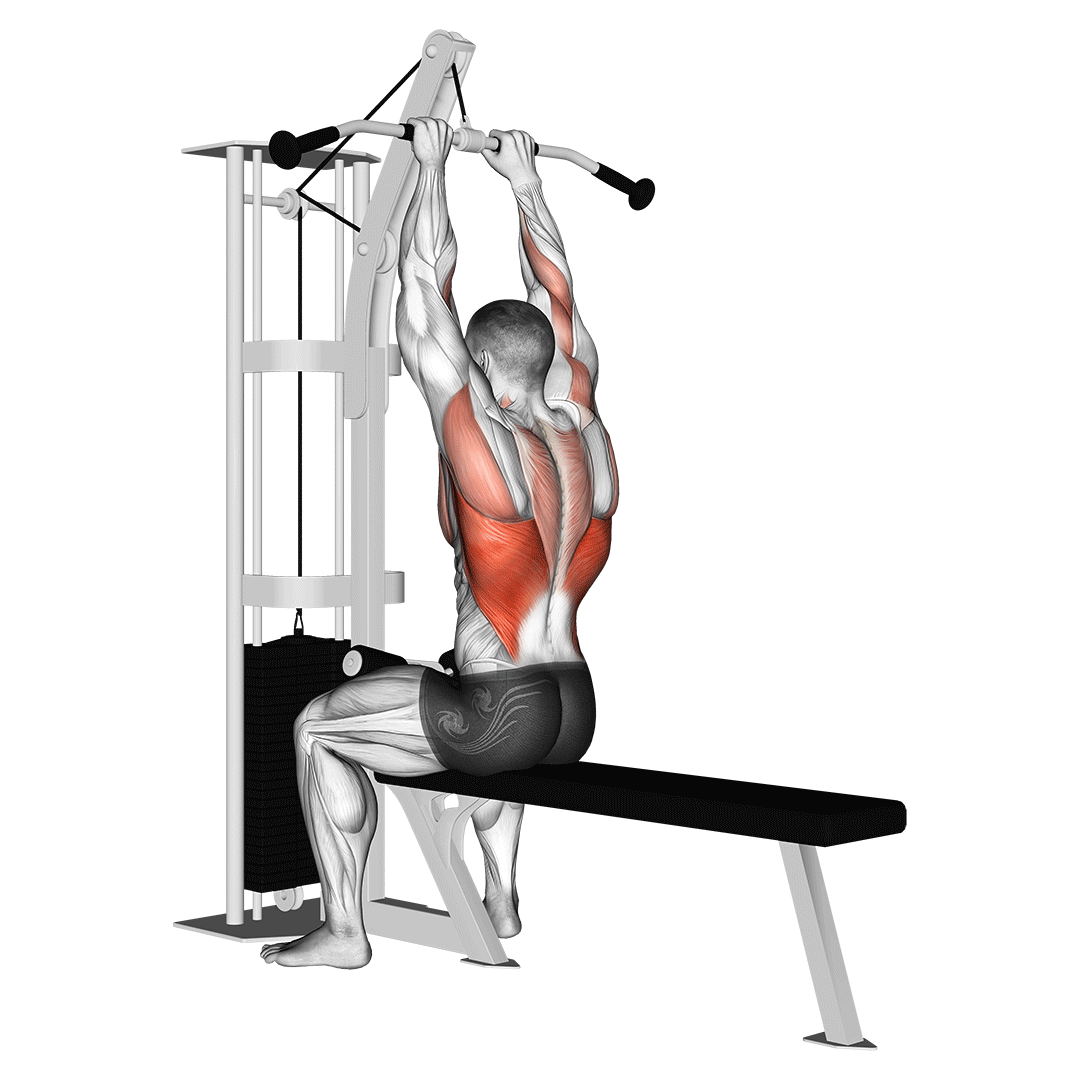
As an upright row substitute, the close grip lat pulldown allows for significantly lower risk of injury, more weight to be lifted and an overall more comfortable exercise to be adopted.
Despite these benefits, substituting with this particular alternative will unfortunately reduce emphasis on the medial deltoid head - of which may be a dealbreaker for some.
Band Pull Aparts
Band pull aparts are a highly convenient resistance band exercise that target much the same muscle groups as cable upright rows, only with greater emphasis on the posterior deltoids and somewhat less on the upper trapezius muscles.
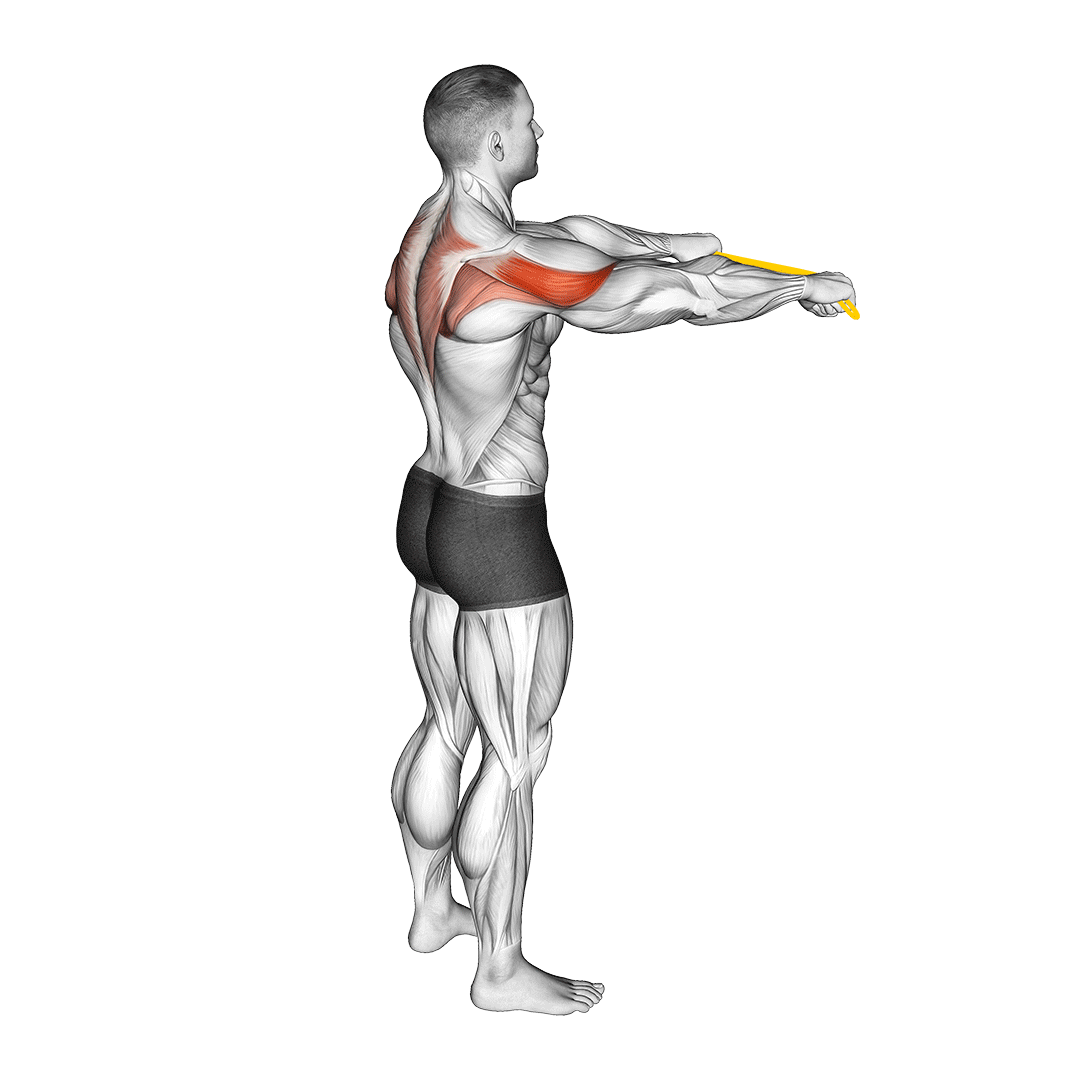
As an alternative, band pull aparts are best used in situations where no cable machine is present - or if the lifter wishes to rehabilitate and strengthen their shoulder structures as a whole.
Frequently Asked Questions (FAQ)
Are Cable Upright Rows Safe?
Yes - cable upright rows can be safe, so long as only a moderate amount of weight is lifted and proper technique is followed. Remember to never raise your upper arms over your shoulders at any point during the movement.
Are Upright Rows Enough for the Rear Delts?
Although upright rows do indeed target the rear delts to a certain extent, they are more likely to result in development of the medial section of the deltoids instead.
As such - no, upright rows are likely not enough to target your rear delts.
Are Cable Upright Rows Effective?
Cable upright rows are only as effective as your programming and recovery allow them to be.
Regardless of their injury risk, the exercise features a large range of motion, high capacity for both load and volume and a relatively small scope of muscular recruitment. These factors all add up to an exercise perfect for developing both strength and mass in the correct training contexts.
References
1. Schoenfeld, Brad & Kolber, Morey & Haimes, Jonathan. (2011). The Upright Row: Implications for Preventing Subacromial Impingement. Strength & Conditioning Journal. 33. 25-28. 10.1519/SSC.0b013e31822ec3e3.
2. Lorenzetti, Silvio, Romain Dayer, Michael Plüss, and Renate List. 2017. "Pulling Exercises for Strength Training and Rehabilitation: Movements and Loading Conditions" Journal of Functional Morphology and Kinesiology 2, no. 3: 33. https://doi.org/10.3390/jfmk2030033

